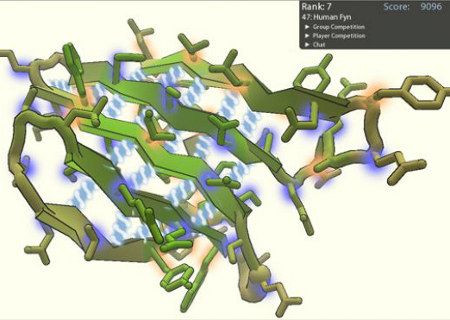Gamers Working to Solve HIV Through Puzzles

- 236,000 players have registered for the game since it was released.
- The software utilized human players to create a design for M-PMV - a protein that shares many qualities with HIV. Scientists were excited to discover thousands of new designs for it, after submitting it to the gamers.
- The reason it works is that humans can think spatially better than a computer says Seth Cooper, lead designer of 'FoldIt' in a press release.
- Some of the players have been working on the game which was created by a team of computer scientists at UW's (University of Washington) Center for Game Science, for three years. The team play aspects have evolved to use real-time chats as multiple players work together to solve one protein.
- A new concept in 3D Puzzle solving, FoldIt uses current molecular biology methods to create 'levels' where players must rotate, tweak, pull and push pieces of Protein (eg. DNA) in a 3D environment.
- Currently, thousands of players are tweaking various unknown protein structures generated by the game each day enabling scientists to get new insights on disease.
- "Remarkably, Foldit players were able to generate models of sufficient quality for successful molecular replacement and subsequent structure determination." said the scientists involved in the journal Nature Structural & Molecular Biology, "The refined structure provides new insights for the design of antiretroviral drugs."
- The 'competitive social interaction' is a strong driving force, say researchers who acknowledge the gamers in their research after over a million designs were submitted in three weeks.
Published by Medicaldaily.com



























